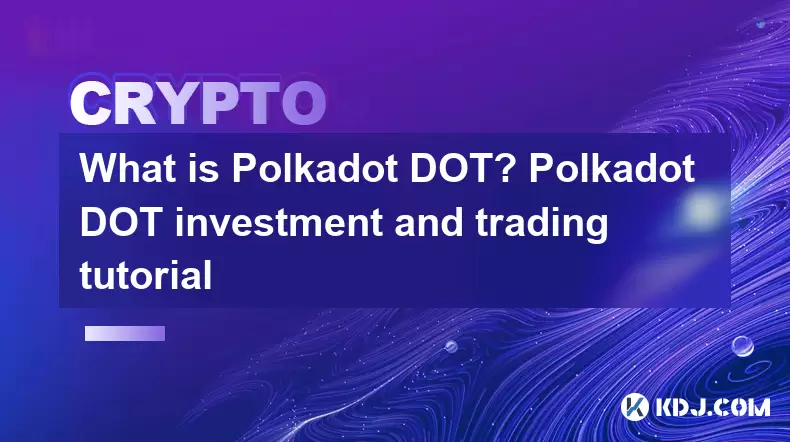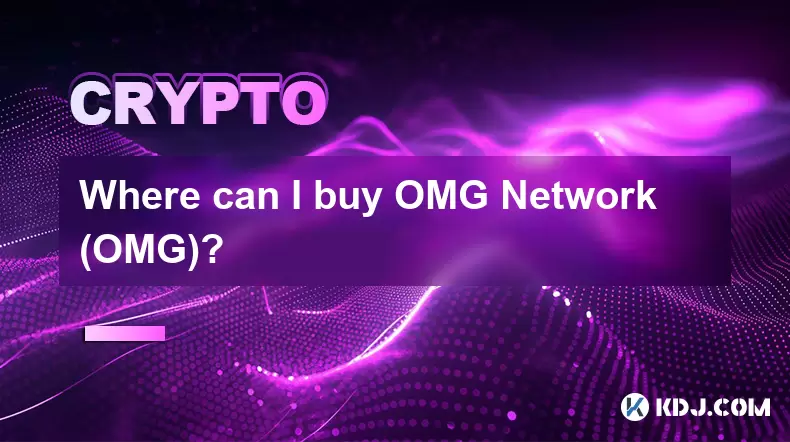-
 Bitcoin
Bitcoin $116400
-0.36% -
 Ethereum
Ethereum $4033
3.40% -
 XRP
XRP $3.302
-1.26% -
 Tether USDt
Tether USDt $1.000
-0.02% -
 BNB
BNB $796.1
1.67% -
 Solana
Solana $177.8
1.89% -
 USDC
USDC $0.9999
0.00% -
 Dogecoin
Dogecoin $0.2314
4.09% -
 TRON
TRON $0.3381
0.14% -
 Cardano
Cardano $0.7989
1.22% -
 Stellar
Stellar $0.4496
-1.84% -
 Chainlink
Chainlink $20.42
9.42% -
 Hyperliquid
Hyperliquid $41.17
0.88% -
 Sui
Sui $3.914
3.77% -
 Bitcoin Cash
Bitcoin Cash $584.7
1.52% -
 Hedera
Hedera $0.2632
-0.54% -
 Avalanche
Avalanche $24.09
3.40% -
 Ethena USDe
Ethena USDe $1.001
-0.02% -
 Litecoin
Litecoin $123.2
1.33% -
 Toncoin
Toncoin $3.318
-0.04% -
 UNUS SED LEO
UNUS SED LEO $8.984
-0.05% -
 Shiba Inu
Shiba Inu $0.00001323
2.85% -
 Uniswap
Uniswap $10.90
4.41% -
 Polkadot
Polkadot $3.999
3.34% -
 Dai
Dai $1.000
0.01% -
 Cronos
Cronos $0.1630
9.64% -
 Bitget Token
Bitget Token $4.484
0.82% -
 Monero
Monero $272.4
2.44% -
 Pepe
Pepe $0.00001173
6.03% -
 Aave
Aave $290.8
2.88%
What is Polkadot DOT? Polkadot DOT investment and trading tutorial
Polkadot (DOT) enables blockchain interoperability, allowing different chains to communicate and share data securely, aiming for a scalable, decentralized internet.
Jun 02, 2025 at 05:42 am

What is Polkadot (DOT)?
Polkadot (DOT) is a blockchain platform that aims to enable different blockchains to interoperate and share information in a trustless and decentralized manner. Created by the Web3 Foundation, Polkadot's primary goal is to facilitate a fully decentralized and scalable internet. DOT is the native cryptocurrency of the Polkadot network, used for governance, staking, and bonding. The platform's architecture allows for the creation of customized blockchains, known as parachains, which can connect and communicate with each other.
Polkadot's unique selling point is its ability to enable interoperability between disparate blockchains, making it a potential solution to the scalability and fragmentation issues faced by many existing blockchain networks. By allowing different blockchains to communicate and share data securely, Polkadot aims to create a more interconnected and efficient blockchain ecosystem.
Investing in Polkadot (DOT)
Investing in Polkadot (DOT) involves understanding the potential of the platform and its role in the broader blockchain ecosystem. DOT can be purchased on various cryptocurrency exchanges, such as Binance, Kraken, and Coinbase. When considering an investment in DOT, it is crucial to assess the project's development progress, community engagement, and potential for growth.
One key aspect to consider is the governance model of Polkadot. DOT holders have the ability to vote on network upgrades and changes, making it a decentralized governance system. This means that as an investor, you have a say in the direction of the project. Additionally, DOT can be staked to support the network's security and earn rewards, which can be an attractive feature for long-term investors.
Trading Polkadot (DOT)
Trading Polkadot (DOT) involves actively buying and selling the cryptocurrency to take advantage of market fluctuations. To start trading DOT, you will need to set up an account on a cryptocurrency exchange that supports DOT trading pairs. Here is a detailed tutorial on how to trade DOT:
- Choose a reputable exchange: Select an exchange like Binance, Kraken, or Coinbase that offers DOT trading pairs.
- Create and verify your account: Sign up for an account on the chosen exchange and complete the verification process, which may require providing personal information and identity documents.
- Deposit funds: Fund your account with either fiat currency or another cryptocurrency, depending on the exchange's options.
- Navigate to the trading section: Once your account is funded, go to the trading section of the exchange and find the DOT trading pair you want to trade (e.g., DOT/BTC, DOT/ETH, or DOT/USDT).
- Place an order: You can place different types of orders, such as market orders, limit orders, or stop-loss orders. A market order will execute immediately at the current market price, while a limit order will only execute if the price reaches your specified level.
- Monitor and manage your trades: Keep an eye on your trades and adjust your strategy as needed. Use tools like stop-loss orders to minimize potential losses.
Staking Polkadot (DOT)
Staking Polkadot (DOT) is another way to engage with the network and potentially earn rewards. Staking involves locking up a certain amount of DOT to participate in the network's consensus mechanism and validate transactions. Here's how to stake DOT:
- Choose a staking platform: You can stake DOT directly on the Polkadot network or through a third-party staking service. The official Polkadot staking interface can be accessed via the Polkadot.js browser extension.
- Install the Polkadot.js extension: Download and install the Polkadot.js browser extension from the official website.
- Create a Polkadot account: Use the extension to create a new Polkadot account or import an existing one.
- Transfer DOT to your staking account: Send the amount of DOT you want to stake to your Polkadot account.
- Nominate validators: Select validators to nominate your DOT to. Validators are responsible for validating transactions and securing the network.
- Confirm your stake: Once you have nominated validators, confirm your stake and start earning rewards based on the network's performance.
Understanding Polkadot's Ecosystem
Polkadot's ecosystem is composed of several key components that work together to achieve its goals of interoperability and scalability. These components include the Relay Chain, Parachains, and Bridges. The Relay Chain is the central chain that coordinates the network and ensures consensus. Parachains are individual blockchains that connect to the Relay Chain and can be customized for specific use cases. Bridges allow Polkadot to connect with external blockchains, enabling interoperability with networks like Ethereum and Bitcoin.
The governance system of Polkadot is another crucial aspect of its ecosystem. DOT holders can participate in the governance process by voting on proposals and referenda. This decentralized governance model ensures that the community has a say in the direction of the project and can influence its development.
Risks and Considerations
Investing and trading in Polkadot (DOT) come with certain risks that should be carefully considered. Cryptocurrency markets are highly volatile, and the value of DOT can fluctuate significantly. Additionally, the success of Polkadot depends on the continued development and adoption of its technology. Regulatory changes and technological challenges could also impact the project's progress.
It is essential to conduct thorough research and understand the potential risks before investing or trading in DOT**. Diversifying your portfolio and only investing what you can afford to lose are key principles of responsible investing in cryptocurrencies.
Frequently Asked Questions
1. What makes Polkadot different from other blockchain platforms?
Polkadot's primary differentiator is its focus on interoperability, allowing different blockchains to communicate and share data. This is achieved through its unique architecture, which includes the Relay Chain, parachains, and bridges.
2. Can I use Polkadot for smart contracts?
Yes, Polkadot supports smart contracts through its parachains. Developers can create parachains that support smart contract functionality, similar to platforms like Ethereum.
3. How does staking Polkadot (DOT) work, and what are the benefits?
Staking DOT involves locking up a certain amount of the cryptocurrency to participate in the network's consensus mechanism. Stakers earn rewards for supporting the network's security and validating transactions. The benefits include potential passive income and the ability to contribute to the network's governance.
4. Are there any fees associated with trading Polkadot (DOT)?
Yes, trading DOT on exchanges typically involves fees, which can vary depending on the exchange and the type of order. Additionally, withdrawing DOT from an exchange may incur a withdrawal fee. It's important to review the fee structure of the exchange before trading.
Disclaimer:info@kdj.com
The information provided is not trading advice. kdj.com does not assume any responsibility for any investments made based on the information provided in this article. Cryptocurrencies are highly volatile and it is highly recommended that you invest with caution after thorough research!
If you believe that the content used on this website infringes your copyright, please contact us immediately (info@kdj.com) and we will delete it promptly.
- Moat Stocks & Mega-Cap Momentum: July's Standout Performance
- 2025-08-09 12:30:12
- Injective (INJ) Eyes $15.39 Breakout Amidst Explosive Network Growth
- 2025-08-09 12:30:12
- Ripple vs. SEC: XRP Price Soars as Legal Battles End, But Can It Outpace Rising Competitors?
- 2025-08-09 13:10:12
- DWP Management, XRP, and Digital Asset Funds: A New Era for Institutional Investment?
- 2025-08-09 13:30:12
- Pi Network's KYB Verification: A Leap Towards Sustainable Token Launch
- 2025-08-09 13:30:12
- Bitcoin, Dollar Alternative, and Institutional Adoption: A New Era?
- 2025-08-09 13:35:12
Related knowledge

Where can I buy UMA (UMA)?
Aug 07,2025 at 06:42pm
Understanding UMA and Its Role in Decentralized FinanceUMA (Universal Market Access) is an Ethereum-based decentralized finance (DeFi) protocol design...

How to buy Storj (STORJ) tokens?
Aug 09,2025 at 07:28am
Understanding Storj (STORJ) and Its Role in Decentralized StorageStorj is a decentralized cloud storage platform that leverages blockchain technology ...

What is the best app to buy Nano (NANO)?
Aug 09,2025 at 03:35am
Understanding Nano (NANO) and Its Unique FeaturesNano is a feeless, instant cryptocurrency designed for fast peer-to-peer transactions. Unlike many ot...

Where can I purchase Siacoin (SC)?
Aug 08,2025 at 11:14am
Understanding Siacoin (SC) and Its Role in the Sia NetworkSiacoin (SC) is the native cryptocurrency of the Sia decentralized cloud storage platform, a...

Where can I buy OMG Network (OMG)?
Aug 08,2025 at 12:57pm
Understanding OMG Network (OMG) and Its PurposeThe OMG Network, originally known as OmiseGO, is a layer-2 scaling solution built on the Ethereum block...

What exchanges support buying IOTA (MIOTA)?
Aug 07,2025 at 09:58pm
Understanding the Role of Private Keys in Cryptocurrency SecurityIn the world of cryptocurrency, private keys are the cornerstone of ownership and con...

Where can I buy UMA (UMA)?
Aug 07,2025 at 06:42pm
Understanding UMA and Its Role in Decentralized FinanceUMA (Universal Market Access) is an Ethereum-based decentralized finance (DeFi) protocol design...

How to buy Storj (STORJ) tokens?
Aug 09,2025 at 07:28am
Understanding Storj (STORJ) and Its Role in Decentralized StorageStorj is a decentralized cloud storage platform that leverages blockchain technology ...

What is the best app to buy Nano (NANO)?
Aug 09,2025 at 03:35am
Understanding Nano (NANO) and Its Unique FeaturesNano is a feeless, instant cryptocurrency designed for fast peer-to-peer transactions. Unlike many ot...

Where can I purchase Siacoin (SC)?
Aug 08,2025 at 11:14am
Understanding Siacoin (SC) and Its Role in the Sia NetworkSiacoin (SC) is the native cryptocurrency of the Sia decentralized cloud storage platform, a...

Where can I buy OMG Network (OMG)?
Aug 08,2025 at 12:57pm
Understanding OMG Network (OMG) and Its PurposeThe OMG Network, originally known as OmiseGO, is a layer-2 scaling solution built on the Ethereum block...

What exchanges support buying IOTA (MIOTA)?
Aug 07,2025 at 09:58pm
Understanding the Role of Private Keys in Cryptocurrency SecurityIn the world of cryptocurrency, private keys are the cornerstone of ownership and con...
See all articles

























































































